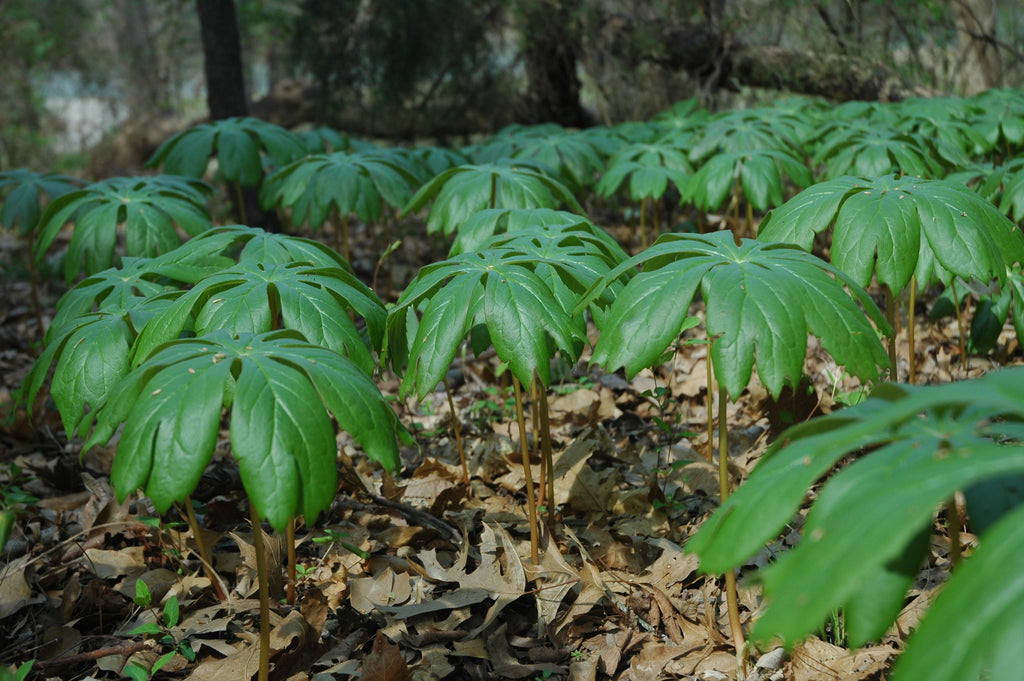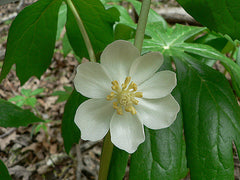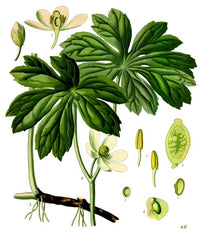





About this cultivar:
Podophyllum peltatum is a rhizomatous, native Missouri wildflower that occurs in both moist and dry woodland areas throughout the American State. From a single stem, each plant grows upwards and features one or two, deeply-divided, palmately-lobed, umbrella-like, pale green leaves. Plants with only one leaf will not flower. From the crotch on two-leafed plants, a single, nodding, waxy, white flower appears on a short, thin stem in early spring. Flowers are quite showy, but usually hidden by the umbrella-like leaves. Each flower gives way to an edible, fleshy, greenish fruit which turn golden when ripe and may be used to make preserves and jellies. This is were it gets its common name: mayapple. The leaves and roots are poisonous, however. Specific epithet refers to the peltate leaves.
A fun and quite exotic plant to have in a shady area or corner!
- Position: Partial shade, full sahde
- Soil: Almost any soil, grows well in Ballyrobert
- Flowers: May
- Other features: Interesting Foliage or Fruit
- Hardiness: H7 - Hardy in the severest European continental climates (< -20°C), Fully hardy, grows well in Ballyrobert
- Habit: Clump forming
- Foliage: Semi evergreen
- Height: 15 - 25 cm (0.5 - 0.8 ft)
- Spread: 15 - 25 cm (0.5 - 0.8 ft)
- Time to full growth: 5 to 10 years
- Plant type: Herbaceous Perennial
- Colour: Green, purple
- Goes well with: --
About this genus:
Podophyllum (pod-o-fil-lum) is an herbaceous perennial plants in the barberry family (Berberidaceae), described as a genus by Linnaeus in 1753. The name is a contraction of the latin anapodophyllumIn, meaning duck's-foot-leaved! Though the common name is mayapple, it's flower appears in early May, not the apple. The fruit or apple is produced early summer and ripens later in summer.
Flourishing in moist, humus-rich niches, Podophyllum’s vigorous fleshy rhizomes form a substantial colony. Every part of Podophyllum is toxic except the ripened apples, although recent studies indicate the entire plant contains promising medicinal properties including anticancer and other healing compounds. Mayapple has been used by American Indians who used to boil the poisonous root, and use the water to cure stomach aches.
The bizarre, oddly marked leaves look like they belong on an old Star Trek set rather than in the garden, but they definitely catch your eye. Dan Hinkley considers them, among the most dramatic foliage plants that I currently have in my garden. We grow ours in our woodland, but they could almost be put anywhere that isn't too extreme in dryness or wetness.

